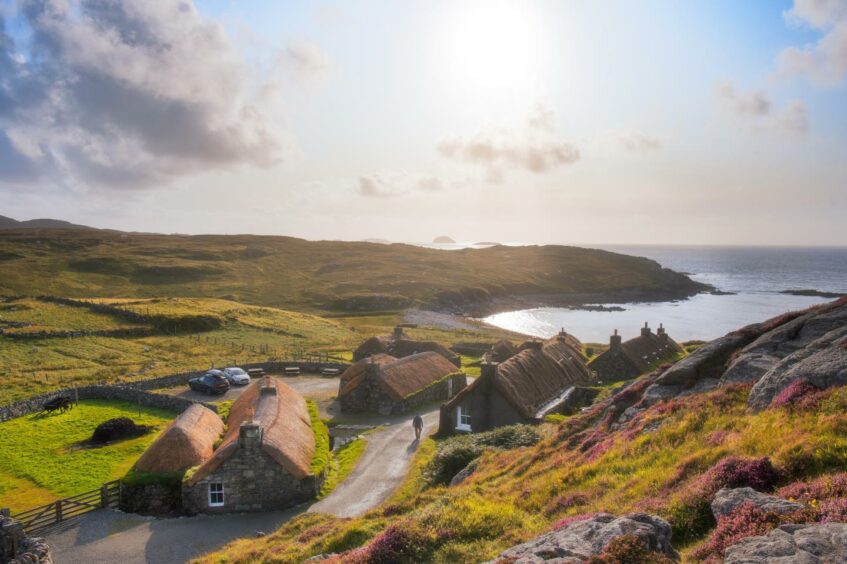
The New Year is a time for staying close to home so, in that spirit, I will take a look at some energy-related issues that affect the Western Isles and will come to a head in 2022.
It is not a parochial exercise since, as so often happens, local issues reflect national ones in microcosm. Take the question of preparedness for the ScotWind licences which are due to be announced later this month.
Are we ready for them, in order to maximise economic benefits for Scotland? Or, instead of Scotland, read the Western Isles. The question arises in various forms but one consistent theme is that unless the infrastructure is in place, the work will pass us by.
Three of the ScotWind licence areas are off the Western Isles; one of them is distinctive within the programme because it lies close to the west side of Lewis. The other two are in much deeper waters to the north and west.
Late last year, two Lewis companies which operate in the marine sector around the UK – Seatrek and GulfXStream – voiced frustration over the absence of consultation about how the piers and harbours down the west side of the Outer Hebrides can be developed in order to ensure they can provide the services these developments will require.
They pointed out that for decades, the Crown Estate has been taking money out of these lochs for fish farm licences but none of it has gone back into developing harbour facilities in places like Breasclete, Carloway and Miavaig, all with the potential to service the offshore wind developments.
In response, the Western Isles Council – which is harbour authority for these places – said that there is plenty time. Once the licences are granted, there will be a gap of several years before it is known which bidders have succeeded in gaining subsidy under the Contract for Difference (CfD) scheme, so it will be towards the end of the decade before construction of these projects begins.
The counter-argument is that the preliminary work will kick off a lot sooner than that – cable surveys, environmental surveys and so on – all stuff that needs boats and harbours. And, the argument goes, if local industry does not get in early, there are plenty national and international companies waiting in the wings, with no local obligations.
As I say, it is a case of a national question being reflected at local level. How prepared are we and what are the risks involved in delay? I recently heard the Mayor of Teeside on radio, relating how they won three inward investment projects related to renewable energy originally destined for Scotland but transferred their focus because of the Scottish Government’s reluctance to embrace freeports.
That is a very real example of how delay, even at this stage, has real consequences. In the case of the Western Isles, it is unrealistic to expect the local authority alone to fund the infrastructural investment required. That is why we need a national plan and the use of structural funds to back it up.
The next question is where the power from these offshore wind developments will go, once the developments happen. That takes us back to the 20 year enigma which the islands have lived with. They have among the best renewable energy resources in the world but nowhere to send the power generated because there is still no interconnector with the mainland.
This sad saga will, hopefully, reach a positive conclusion in 2022. If the major wind farm development on Lewis can gain CfD support, there is a commitment from Ofgem for the interconnector to go ahead but it remains a highly unsatisfactory and uncertain way of matching an energy resource to the market that needs it.
If we are serious about meeting net zero targets, it should not be left to the market and the vested interests within it to dictate where investment takes place. Islands, by definition, have the potential to contribute as much to the nation’s energy needs as the coalfields of Ayrshire and Fife once did.
Rewiring the country to release that potential should be a matter for government policy rather than the lottery that has trapped the island resource for decades.
At the user end of the energy debate, there is a particular issue which needs addressing in the Western Isles and other rural parts of Scotland. More than half the homes in the islands rely on oil-fired heating. There is no other practical alternative.
As a result of the SNP-Green coalition agreement, upgrading oil-fired boilers has become instantly taboo without any thought for the implications in rural areas. Telling people to install air source heat pumps is a fantasy for reasons of cost, supply and construction.
This needs to be sorted out sooner rather than later. An oil-dependent pensioner living in a rural area is not an enemy of the environmental agenda – just someone who has to live with the practicalities of life. Government should try doing the same.
Forty per cent of households in the Western Isles are categorised as being in fuel poverty, against a Scottish average of 24 per cent. Further price increases will hit the islands very hard – and for most consumers there is no mains gas as an alternative. On top of that there is the indefensible surcharge for Highlands and Islands consumers which adds significantly to the bills.
All of these issues have national as well as local resonance. But let’s for the moment keep it local. The report card on each, this time next year, will say a lot about how responsive government is to the needs and potential of Scotland’s periphery…
Brian Wilson is a former UK energy minister.
Recommended for you
